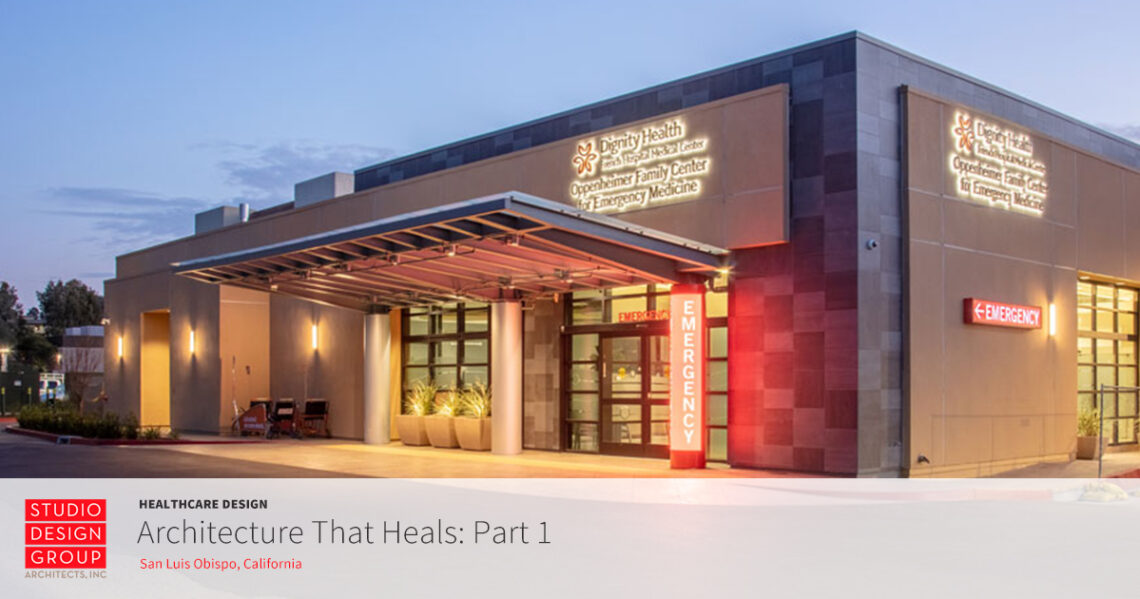
The modernist movement of the early 20th century was spurred, in part, as a means to limit the spread of disease through design.
How will architecture respond and evolve to the pandemic met in the early part of the 21st century?
It’s been quite a few weeks of working from home and distance learning in many households in SLO County during this global pandemic. So many of us are saturated with the heavy reality of isolating at home that we thought a positive post about how we can look to the future could lift our collective spirits.
Architecture is often a response to the workings of society at large. We’ve likely entered a new era where many of our everyday activities will evolve and change as a result of this recent pandemic to help preserve lives as well as our way of life should something like this happen again in the future. As counties and states in the US start considering steps for reopening businesses, leaders are planning the next best steps we can take to move forward safely.
Whether it’s a second wave of SARS-Cov-2 (aka COVID-19) that we face or another highly transmittable disease that occurs in the future, we thought we’d take a moment to consider lessons learned and how we might proactively prevent the spread of infection in our public spaces.
This is a two part series. This first part will look at ways our built environment can be modified to help prevent the spread of infection in our public spaces and the second part will look at healthcare settings in particular (including long term care facilities).
Handwashing and Social Distance Integration With the Built Environment
Building for public health is as ancient as Roman architecture and their advanced sewer system. Time and again, generation after generation, architecture, and urban planning have evolved and responded to plagues, epidemics, and diseases.
What we’ve been reminded thus far in our current pandemic is the extreme importance of frequent and thorough washing of hands coupled with social distancing.
Some of these suggestions may seem farfetched and surreal, but so did face coverings on the head of every American just a few months ago. These types of ideas may just be the innovative solutions we need to create safer communities so we can all continue to work, play, and connect with one another.
Many people in our everyday environments can unintentionally spread germs that can, in turn, infect others. Asymptomatic people can unknowingly spread disease and some people may go out in public despite feeling a little unwell. Meaning, infection control measures need to be built into our environment to help stop the spread of diseases.
Handwashing
“About 80% of infectious diseases can be transmitted by human touch.” (Source)
Handwashing is the #1 first step in controlling the spread of the vast majority of transmittable diseases. Handwashing protocols are already quite familiar in our workplaces, food preparation, and healthcare. What if these principles were applied to our society as a whole?
Building Entry Design
It’s possible handwashing stations will be more common in the future and not just allocated to toilet rooms and kitchens. Le Corbusier explored this idea in his famous Villa Savoye home by placing a sink in the front hall.
To help control the spread of disease and increase the ease of frequent washing, handwashing stations could be provided at the entrances to stores, banks, office buildings, restaurants, classrooms, healthcare waiting rooms, and convention halls. Hand sanitizer stations could be located throughout grocery store aisles much like hospital corridors and also located at every gas station pump.
Seamless & Touchless Fixture Design
Seamless fixtures with limited crevices are ideal for infection control since they are easier to clean and keep clean. Touchless technology is not just a cool feature of the future, it also helps stop the spread of diseases that are transmitted via human hands.
Seamless and touchless sinks and faucets in every public facility could be a future health requirement. Innovations in fully integrated faucet design for touchless soap, water, and hand drying can be seen in the Verge with Washbar Technology by Bradley. Another example is the Haws Electric Water Cooler with seamless drinking fountain controls and touchless water bottle fillers.
Extending these technological advances to other high touch surfaces could be integral to helping stop spread disease. Many of these high touch surfaces include door handles, elevator buttons, point of sales credit card machines, shopping carts, countertops, etc. Advancements in voice and automated technology may help reduce the number of surfaces we each touch daily.
We will also likely see a rise in antimicrobial materials and finishes in commercial settings so that the built environment itself is resistant to harboring pathogens.
Social Distancing
While touch is the #1 way most germs are spread, droplets in the air from sneezing/talking/breathing is another high source for transmission. Masks and face coverings can help reduce transmission, but a minimum of 6 feet between persons is the best way to reduce the spread of disease per CDC recommendations.
We’ve seen a large shift of professionals working from home to comply with state and federal guidelines to shelter at home. We’ve also seen educational institutes shift to distance learning environments. Unfortunately, many jobs and activities cannot be conducted from home so our need to safely interact in public spaces must be supported by our built environments.
Physical Barriers
At grocery stores, banks, post offices, and medical check in stations, we’re seeing makeshift plexiglass screens pop up as a way to provide a physical barrier to block the spread of airborne germs when people must work near one another for transactions.
We may see these physical barriers become permanent, integrated fixtures into our everyday environments. It is a relatively easy addition to existing facilities and helps preserve social separation when distance itself cannot be achieved.
Physical Distance
We may see new design guidelines requiring greater physical distance between transaction stations. Places of gathering, such as movie theaters, classrooms, restaurants, and sports arenas may need to develop options for providing less permanent seating to ensure patrons can safely congregate without being within close proximity to one another.
Another tool that is being used to reinforce social distancing is integral flooring designs that help remind patrons to stand further apart while in line or perusing stores. These designs can also encourage one way traffic in narrow spaces to help reduce the number of people passing close by one another.
Mechanical Air Handling
It’s possible we will see an overhaul of the mechanical code for commercial buildings and high-density residences. There may be more stringent requirements for outside air intake and air changes per hour to closer mimic healthcare settings in all built environments. Cleaner air makes for cleaner buildings and healthier people.
Whatever steps we take into the future, it will be fascinating to see how this new age of architectural innovation develops for generations to come.
“Nothing in this world is more simple and more cheap than making cities that provide better for people.” ~ Jan Gehl, architect
